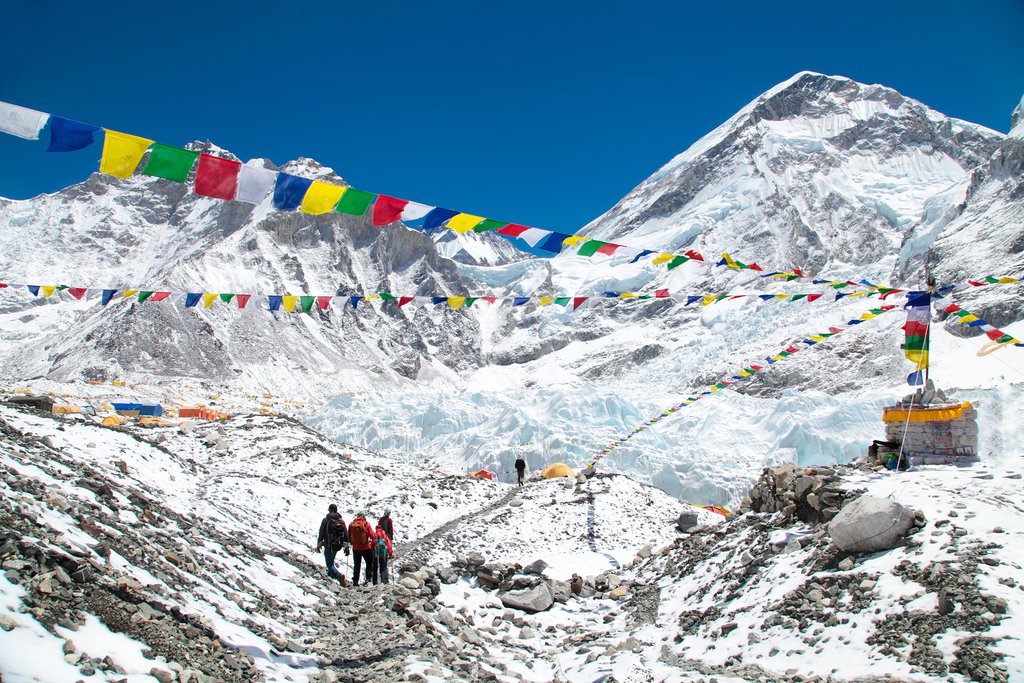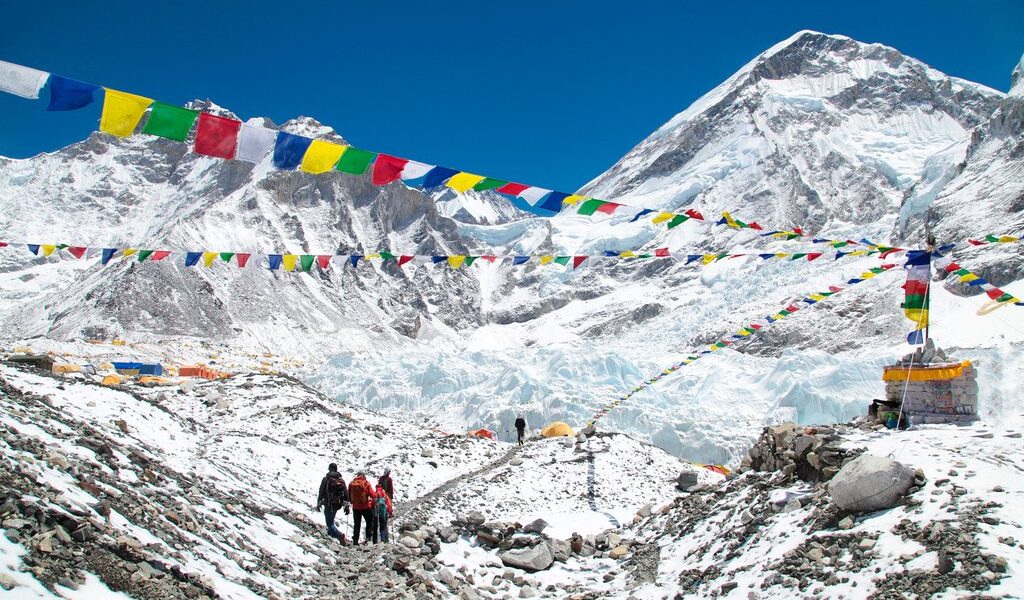
While October is the busiest trekking month in Nepal, November is a close second. But, if anything, the conditions in November are even better than those in October. Read on to find out more about traveling to Everest Base Camp in November.
November in the Everest Region: A Comprehensive Guide
The allure of the majestic Everest region draws trekkers from around the globe, and November presents itself as a particularly appealing time to embark on this unforgettable adventure. This detailed guide will provide you with invaluable insights into the weather conditions, potential crowds, recommended routes, essential packing tips, transportation options, cultural events, and other helpful information to ensure a successful and enriching trek.
## Weather in the Everest Region in November
One of the most compelling reasons to consider trekking in the Everest region in November is the remarkably low probability of rainfall. In fact, November stands out as the driest month of the entire year in this breathtaking corner of the world. This translates to consistently low humidity levels, creating an ideal environment for capturing those crisp, clear mountain vistas that define the Everest experience. The visibility is often exceptional during this period, far surpassing many other times of the year.
While the skies are typically clear and sunny, it’s essential to be prepared for cooler temperatures compared to October. In Namche Bazaar, a bustling hub for trekkers at an elevation of 11,290 feet (3440 meters), the average low temperature in November hovers around 26°F (-3°C), while the average high reaches approximately 48°F (9°C). Keep in mind that temperatures will decrease significantly as you ascend to higher altitudes.
Despite the chill in the air, the combination of minimal rainfall and clear, unobstructed views makes November arguably the most favorable month for trekking to Everest from a weather perspective. The stable conditions enhance the overall trekking experience, providing a safer and more enjoyable journey.
## Crowds and Costs in November
November is known to be a popular time for trekking in the Everest region, nearing the peak season levels observed in October. While not quite as crowded as October, expect to encounter a considerable number of fellow travelers along the trails. However, it’s worth noting that the density of trekkers tends to decrease as the month progresses, offering a slightly more secluded experience towards the end of November.
The Everest Base Camp (EBC) trek remains the undisputed champion of trekking routes in Nepal, and you should anticipate sharing the trails with numerous other adventurers during your November expedition. Teahouses, the charming local guesthouses that provide accommodation and meals along the trekking routes, tend to fill up quickly, especially in the more popular villages.
To secure a comfortable and convenient stay at your preferred teahouses, it’s highly recommended to trek with a reputable and experienced guide. A knowledgeable guide will not only navigate the trails with expertise but will also ensure that you have a reserved bed at a suitable teahouse each night.
Flights from Kathmandu to Lukla, the gateway to the Everest region, are also in high demand during November. These flights tend to book up far in advance, emphasizing the importance of making your travel arrangements as early as possible to avoid disappointment.
## Recommended Trekking Routes in November
The classic Everest Base Camp (EBC) trek has earned its iconic status for good reason, and if reaching the base of the world’s highest mountain is your primary goal, November presents an excellent opportunity to undertake this legendary journey.
However, if you prefer to avoid the more crowded trails and seek a more solitary trekking experience, the Everest region offers a plethora of alternative routes that still provide breathtaking views of Everest and its surrounding peaks, but with significantly fewer fellow trekkers.
The Gokyo Lakes Trek, renowned for its stunning turquoise lakes and panoramic mountain vistas, provides a captivating alternative to the EBC trek. Similarly, the Ama Dablam Base Camp Trek offers a unique perspective on the iconic Ama Dablam, often considered one of the most beautiful mountains in the world.
Other less-traveled routes venture up different valleys and skirt along the fringes of the main EBC trail, providing a sense of exploration and discovery. Many of these alternative routes intersect with the classic EBC trek at certain points, allowing you to experience the best of both worlds: the solitude of lesser-known trails and the iconic landmarks of the EBC route.
If you plan to trek later in November, it’s crucial to carefully assess the conditions at higher altitudes before embarking on your chosen route. Routes that involve crossing high mountain passes, such as the challenging Three Passes Trek, may be susceptible to early snowfall, potentially rendering them impassable.
## Essential Packing List for November Treks
When trekking in the Everest region in November, adequate preparation is key to ensuring a comfortable and safe journey. Packing the right gear is essential for coping with the cooler temperatures and variable weather conditions.
A high-quality sleeping bag is an indispensable item for any trek in Nepal, and it becomes even more critical in November when temperatures drop considerably at night. While most teahouses provide blankets, their cleanliness can sometimes be questionable. Bringing your own sleeping bag ensures a warm and hygienic sleeping environment. You might consider using the teahouse blankets in addition to your own sleeping bag for extra warmth.
Protecting your skin from the intense high-altitude sunshine is also of paramount importance. The sun’s rays are significantly stronger at higher elevations, and prolonged exposure can lead to sunburn and skin damage. A broad-spectrum sunscreen with a high SPF is a must-have item in your backpack. It’s recommended to bring sunscreen from home, as the quality and range of available sunscreens in Kathmandu may not meet your specific needs.
For a comprehensive packing list tailored specifically for Himalayan treks, refer to dedicated resources that provide detailed recommendations for clothing, gear, and other essential items. Proper preparation will greatly enhance your overall trekking experience and ensure your well-being throughout the journey.
## Getting To and Away from the Everest Region
The fastest and most convenient way to reach the Everest region from Kathmandu is by taking a short flight to the Lukla airport. Flights to Lukla are known to be prone to delays, due to weather changes.
When planning your return from Lukla, it’s essential to incorporate buffer days into your itinerary to account for potential flight delays. While November typically offers favorable weather conditions for flights, unforeseen circumstances can still disrupt schedules. By adding extra days to your itinerary, you can minimize the risk of missing your international flight connections.
For those with more time and a sense of adventure, consider embarking on the “Pioneers’ Route” from Jiri to Lukla. This historic trail was used by early Western mountaineers to access the Everest region before the construction of the Lukla airport. Jiri is accessible by a day’s drive from Kathmandu.
Alternatively, you can fly from Kathmandu to Phaplu and trek through the Solukhumbu region from there. This option provides a more gradual acclimatization to the altitude and offers a unique glimpse into the local culture and landscapes. Few trekkers choose this trail these days, which means you are less likely to see other trekkers until you reach Lukla. This trek typically takes 4-7 days.
## November Festivals in Nepal
The dates of Nepali festivals are determined by the lunar calendar, which means that the timing of these festivals can vary from year to year. Festivals that occur in November in one year may fall in October or December in another.
The Sherpa people, who predominantly inhabit the Everest region, are followers of Tibetan Buddhism and observe distinct cultural traditions. While they may not celebrate all of the same festivals as the Hindu Nepalis of the hill regions, they have their own unique and vibrant celebrations.
If your travels bring you to Kathmandu earlier in November, you may have the opportunity to witness the Tihar festivities. Tihar, also known as the festival of lights, is one of the most important festivals in Nepal and is celebrated with great enthusiasm throughout the country. The capital city comes alive with colorful decorations, oil lamps, and festive cheer.
One of the most significant festivals for the Sherpa community is Mani Rimdu, which typically falls in either October or November. If possible, plan your trek to coincide with Mani Rimdu and witness the celebrations at Tengboche Monastery. Tengboche Monastery is the most important monastery in the Everest region, and during Mani Rimdu, monks don elaborate costumes and perform captivating ritual dances.
By carefully considering the weather, potential crowds, and cultural events, you can craft an unforgettable November trekking experience in the Everest region. With the right preparation and a spirit of adventure, you’ll be well-equipped to create memories that will last a lifetime.
B-1706

